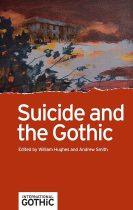
 This article discusses the changing representation of suicide in selected Japanese literary and visual texts, focusing on four 20th and 21st century novels (Kokoro by Natsume Soseki [1914], The Silent Cry/Man’en Gannen no Futtoboru by Kenzaburo Oe [1967], Norwegian Wood/Noruwei no Mori by Haruki Murakami [1987], and Gray Men/Gurei Men by Tomotake Ishikawa [2012]), and concluding with a brief mention of Sion Sono’s film Suicide Circle (Jisatsu Sakuru, 2002) and the manga it inspired (Jisatsu Circle, Furuya Ukamaru, 2002). The article argues that the discussed texts have departed from the historic/nationalistic notion of suicide as noble death in favour of a more Gothic positioning of the theme. In Gothic, suicide has been conventionalised as a declaration of guilt, a side-effect of madness, an extreme form of self-harm, the ultimate withdrawal from life, and a reason for a ghostly return. In Japanese texts, suicide is at the same time civilised and barbaric, elegant and chaotic. It is a perfectly composed act of ascetic renunciation and achievement of a Buddhist ideal, as well as an unstoppable viral outbreak that threatens all life. It is an act of submission to societal norms, a cry of rebellion, and a call to revolution; a choice of an individual, but also the play of karmic forces bound to be repeated. While proposing a familiar Gothic positioning of suicide in the context of depression, alienation, inertia, defiance against authority, dysfunctional relationships, death instinct, or masochistic submission, the discussed texts, a testament to the convergence of Western and Eastern philosophies in modern Japan, invite us to revisit these Gothic conventions from a transcultural perspective.
This article discusses the changing representation of suicide in selected Japanese literary and visual texts, focusing on four 20th and 21st century novels (Kokoro by Natsume Soseki [1914], The Silent Cry/Man’en Gannen no Futtoboru by Kenzaburo Oe [1967], Norwegian Wood/Noruwei no Mori by Haruki Murakami [1987], and Gray Men/Gurei Men by Tomotake Ishikawa [2012]), and concluding with a brief mention of Sion Sono’s film Suicide Circle (Jisatsu Sakuru, 2002) and the manga it inspired (Jisatsu Circle, Furuya Ukamaru, 2002). The article argues that the discussed texts have departed from the historic/nationalistic notion of suicide as noble death in favour of a more Gothic positioning of the theme. In Gothic, suicide has been conventionalised as a declaration of guilt, a side-effect of madness, an extreme form of self-harm, the ultimate withdrawal from life, and a reason for a ghostly return. In Japanese texts, suicide is at the same time civilised and barbaric, elegant and chaotic. It is a perfectly composed act of ascetic renunciation and achievement of a Buddhist ideal, as well as an unstoppable viral outbreak that threatens all life. It is an act of submission to societal norms, a cry of rebellion, and a call to revolution; a choice of an individual, but also the play of karmic forces bound to be repeated. While proposing a familiar Gothic positioning of suicide in the context of depression, alienation, inertia, defiance against authority, dysfunctional relationships, death instinct, or masochistic submission, the discussed texts, a testament to the convergence of Western and Eastern philosophies in modern Japan, invite us to revisit these Gothic conventions from a transcultural perspective.
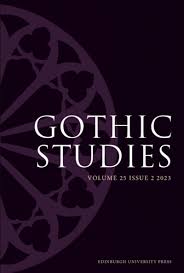 The waiting woman is a ghost who appears to be endlessly waiting – for recognition, for her lover, for a chance to reincarnate, or to exact revenge. In Asia, her roots can be found in early medieval Chinese records of the strange, arguably the oldest written ghost stories in the region. The romanticized version of this ghost, introduced in Tang Xianzu’s drama Peony Pavillion (Mudan ting, 1598), influenced many writers of Japanese kaidan (strange) stories and merged with East and Southeast Asian ghostlore that continues to inspire contemporary local fiction and films. The article proposes to read the figure of the waiting woman as a representation of the enduring myth of the submissive Asian femininity and a warning against the threat of possible female emancipation brought about by the socio-economic changes caused by modernisation.
The waiting woman is a ghost who appears to be endlessly waiting – for recognition, for her lover, for a chance to reincarnate, or to exact revenge. In Asia, her roots can be found in early medieval Chinese records of the strange, arguably the oldest written ghost stories in the region. The romanticized version of this ghost, introduced in Tang Xianzu’s drama Peony Pavillion (Mudan ting, 1598), influenced many writers of Japanese kaidan (strange) stories and merged with East and Southeast Asian ghostlore that continues to inspire contemporary local fiction and films. The article proposes to read the figure of the waiting woman as a representation of the enduring myth of the submissive Asian femininity and a warning against the threat of possible female emancipation brought about by the socio-economic changes caused by modernisation.
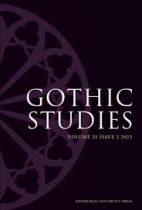
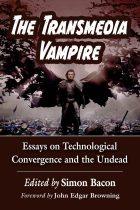
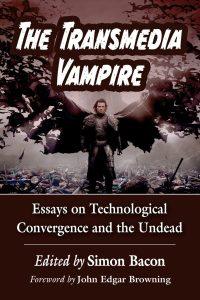
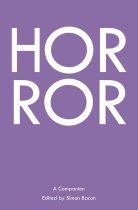
 The promotion of Asian Horror as a single marketable category arguably began at the turn of the millennium with the release of Hideo Nakata’s Ringu (1998) and Ringu 2 (1999), introduced to the world through the festival circuit. The long-haired vengeful spirit of Sadako Yamamura was hailed a ‘new’ figure of evil, critics welcomed the emergence of ‘J-horror,’ and film distributors rushed to cash in on the growing appetite for Asian ghosts and monsters. Originating in the novels of Koji Suzuki, Sadako is a character bound in a cycle of repetitions, appearing in five novels and seven movies to date in Japan (not counting manga and television series), spawning one Korean and three American remakes, and present as an instantly-recognisable pop-cultural reference in countless other productions. This brief discussion of Asian Horror will therefore focus on the novels and films of the Ring cycle and examine the evolution of Sadako as a representative ‘face’ of Asian horror.
The promotion of Asian Horror as a single marketable category arguably began at the turn of the millennium with the release of Hideo Nakata’s Ringu (1998) and Ringu 2 (1999), introduced to the world through the festival circuit. The long-haired vengeful spirit of Sadako Yamamura was hailed a ‘new’ figure of evil, critics welcomed the emergence of ‘J-horror,’ and film distributors rushed to cash in on the growing appetite for Asian ghosts and monsters. Originating in the novels of Koji Suzuki, Sadako is a character bound in a cycle of repetitions, appearing in five novels and seven movies to date in Japan (not counting manga and television series), spawning one Korean and three American remakes, and present as an instantly-recognisable pop-cultural reference in countless other productions. This brief discussion of Asian Horror will therefore focus on the novels and films of the Ring cycle and examine the evolution of Sadako as a representative ‘face’ of Asian horror.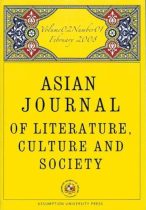
 This article focuses on the four most significant Japanese Ringu movies, mapping out contemporary Japanese horror as a culturally-fostered response to the fear of chaos in the techno-centric orderly system. The representations of chaos, whether affecting spatial and temporal reality, psyche, or social structures can be seen in virtually every contemporary Japanese horror film, while technology re-emerges as a channel for the supernatural and a site of supernatural materialisation. Sadako Yamamura, Chaos personified, may serve as a perfect example of the above.
This article focuses on the four most significant Japanese Ringu movies, mapping out contemporary Japanese horror as a culturally-fostered response to the fear of chaos in the techno-centric orderly system. The representations of chaos, whether affecting spatial and temporal reality, psyche, or social structures can be seen in virtually every contemporary Japanese horror film, while technology re-emerges as a channel for the supernatural and a site of supernatural materialisation. Sadako Yamamura, Chaos personified, may serve as a perfect example of the above.
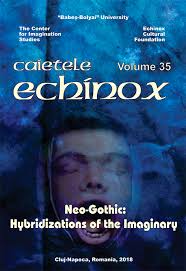 Contemporary Japanese crime writers frequently resort to gothic themes and conventions in their works. This is hardly surprising, since Japanese detective fiction, which dominated Japanese popular literature in the early twentieth century, began as a reaction to nineteenth-century gothic crime stories of writers such as Edgar Allan Poe or Arthur Conan Doyle. This article discusses crime novels of Otsuichi, Natsuo Kirino, and Fuminori Nakamura as examples of Japanese crime gothic, focusing on the Japanese conceptualisation of monstrosity in relation to the figure of the criminal, complementarity of the victim and killer characters, and aestheticisation of violence in the context of Japanese aesthetics of impermanence and imperfection.
Contemporary Japanese crime writers frequently resort to gothic themes and conventions in their works. This is hardly surprising, since Japanese detective fiction, which dominated Japanese popular literature in the early twentieth century, began as a reaction to nineteenth-century gothic crime stories of writers such as Edgar Allan Poe or Arthur Conan Doyle. This article discusses crime novels of Otsuichi, Natsuo Kirino, and Fuminori Nakamura as examples of Japanese crime gothic, focusing on the Japanese conceptualisation of monstrosity in relation to the figure of the criminal, complementarity of the victim and killer characters, and aestheticisation of violence in the context of Japanese aesthetics of impermanence and imperfection.
 This article discusses the changing representation of suicide in selected Japanese literary and visual texts, focusing on four 20th and 21st century novels (Kokoro by Natsume Soseki [1914], The Silent Cry/Man’en Gannen no Futtoboru by Kenzaburo Oe [1967], Norwegian Wood/Noruwei no Mori by Haruki Murakami [1987], and Gray Men/Gurei Men by Tomotake Ishikawa [2012]), and concluding with a brief mention of Sion Sono’s film Suicide Circle (Jisatsu Sakuru, 2002) and the manga it inspired (Jisatsu Circle, Furuya Ukamaru, 2002). The article argues that the discussed texts have departed from the historic/nationalistic notion of suicide as noble death in favour of a more Gothic positioning of the theme. In Gothic, suicide has been conventionalised as a declaration of guilt, a side-effect of madness, an extreme form of self-harm, the ultimate withdrawal from life, and a reason for a ghostly return. In Japanese texts, suicide is at the same time civilised and barbaric, elegant and chaotic. It is a perfectly composed act of ascetic renunciation and achievement of a Buddhist ideal, as well as an unstoppable viral outbreak that threatens all life. It is an act of submission to societal norms, a cry of rebellion, and a call to revolution; a choice of an individual, but also the play of karmic forces bound to be repeated. While proposing a familiar Gothic positioning of suicide in the context of depression, alienation, inertia, defiance against authority, dysfunctional relationships, death instinct, or masochistic submission, the discussed texts, a testament to the convergence of Western and Eastern philosophies in modern Japan, invite us to revisit these Gothic conventions from a transcultural perspective.
This article discusses the changing representation of suicide in selected Japanese literary and visual texts, focusing on four 20th and 21st century novels (Kokoro by Natsume Soseki [1914], The Silent Cry/Man’en Gannen no Futtoboru by Kenzaburo Oe [1967], Norwegian Wood/Noruwei no Mori by Haruki Murakami [1987], and Gray Men/Gurei Men by Tomotake Ishikawa [2012]), and concluding with a brief mention of Sion Sono’s film Suicide Circle (Jisatsu Sakuru, 2002) and the manga it inspired (Jisatsu Circle, Furuya Ukamaru, 2002). The article argues that the discussed texts have departed from the historic/nationalistic notion of suicide as noble death in favour of a more Gothic positioning of the theme. In Gothic, suicide has been conventionalised as a declaration of guilt, a side-effect of madness, an extreme form of self-harm, the ultimate withdrawal from life, and a reason for a ghostly return. In Japanese texts, suicide is at the same time civilised and barbaric, elegant and chaotic. It is a perfectly composed act of ascetic renunciation and achievement of a Buddhist ideal, as well as an unstoppable viral outbreak that threatens all life. It is an act of submission to societal norms, a cry of rebellion, and a call to revolution; a choice of an individual, but also the play of karmic forces bound to be repeated. While proposing a familiar Gothic positioning of suicide in the context of depression, alienation, inertia, defiance against authority, dysfunctional relationships, death instinct, or masochistic submission, the discussed texts, a testament to the convergence of Western and Eastern philosophies in modern Japan, invite us to revisit these Gothic conventions from a transcultural perspective.
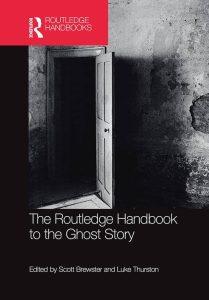 This chapter traces the development of the Chinese-style ghost story in Asian literatures from the classical Chinese genres of zhiguai, and chanqui, through their transformation into Japanese kaidan, to contemporary versions of them. It discusses the structural characteristics and shared themes of such stories, and argues that their modern reincarnations can be divided into reproductions (where contemporary stories are written in a style closely resembling older texts), utilizations (where contemporary authors make use of their audience’s knowledge of the old texts), and hybridizations (where contemporary stories alter older texts, introducing elements of local folklore, modern settings, or other literary influences). As the name suggests, stories of the strange relate to all manner of extraordinary phenomena. To simplify things, the discussion will be limited to the stories that understand ghosts as the returning spirits or souls of the deceased, often taking very material forms in their interactions with humans. The ghosts in question should also be understood as individuals rather than a collective entity, even when they are described as one’s ancestors.
This chapter traces the development of the Chinese-style ghost story in Asian literatures from the classical Chinese genres of zhiguai, and chanqui, through their transformation into Japanese kaidan, to contemporary versions of them. It discusses the structural characteristics and shared themes of such stories, and argues that their modern reincarnations can be divided into reproductions (where contemporary stories are written in a style closely resembling older texts), utilizations (where contemporary authors make use of their audience’s knowledge of the old texts), and hybridizations (where contemporary stories alter older texts, introducing elements of local folklore, modern settings, or other literary influences). As the name suggests, stories of the strange relate to all manner of extraordinary phenomena. To simplify things, the discussion will be limited to the stories that understand ghosts as the returning spirits or souls of the deceased, often taking very material forms in their interactions with humans. The ghosts in question should also be understood as individuals rather than a collective entity, even when they are described as one’s ancestors.